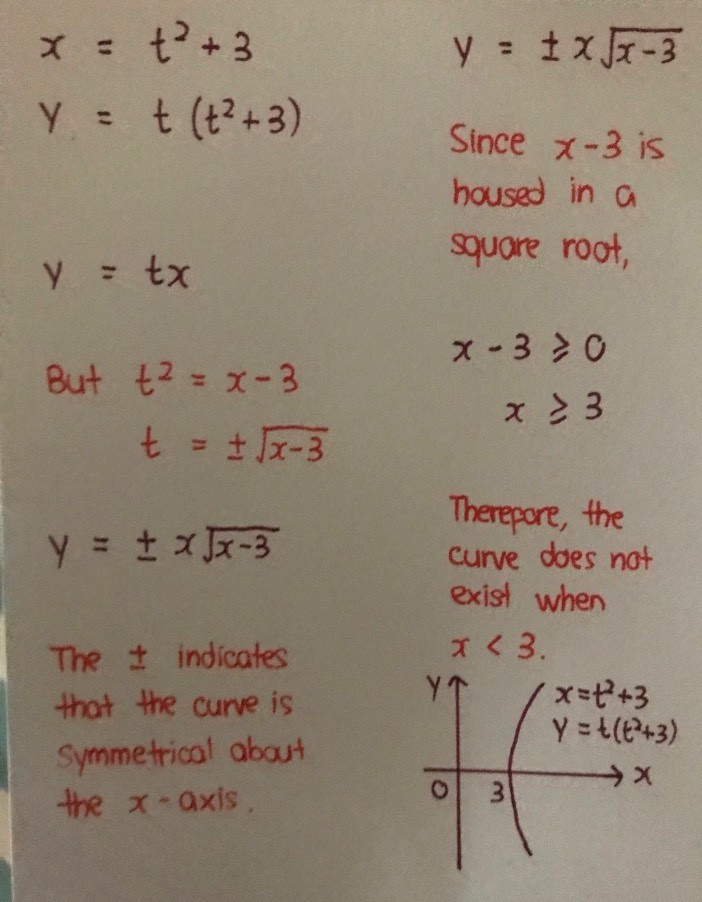Eric Nicholas K's answer to Qianqi Zhao's Junior College 1 H2 Maths Singapore question.
done
1 Upvotes
clear 0 Downvotes
There are other “more algebraic” methods to do part i and ii, but these approaches are sufficiently algebraic.
Date Posted:
4 years ago



The x outside the square root can work for any value of x. However, the one side square root x is only valid for x >= 3, since the square root of any negative number is not a real number. As a result, if x < 3, this expression will not have a real value, even though this fits into the first x.
Points can only exist on the graph if the coordinates have real values.
It’s similar to saying “If one drop of poison is placed in my glass of water, I say that the all the water becomes poisoned and not just a small part of it gets poisoned”. Similarly, the values that x can take are limited to the most restricted expression.
This is why the curve is not defined for x < 3.